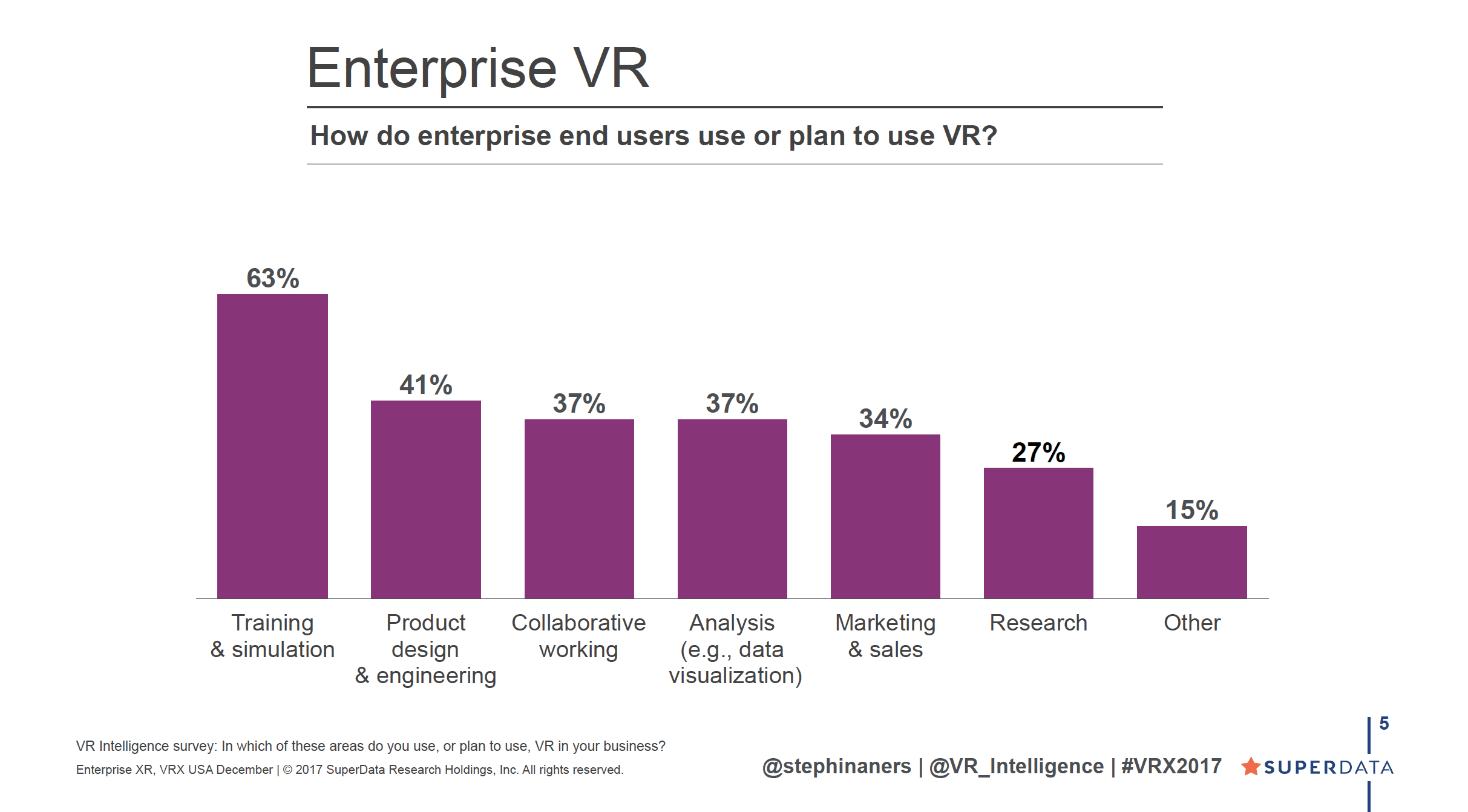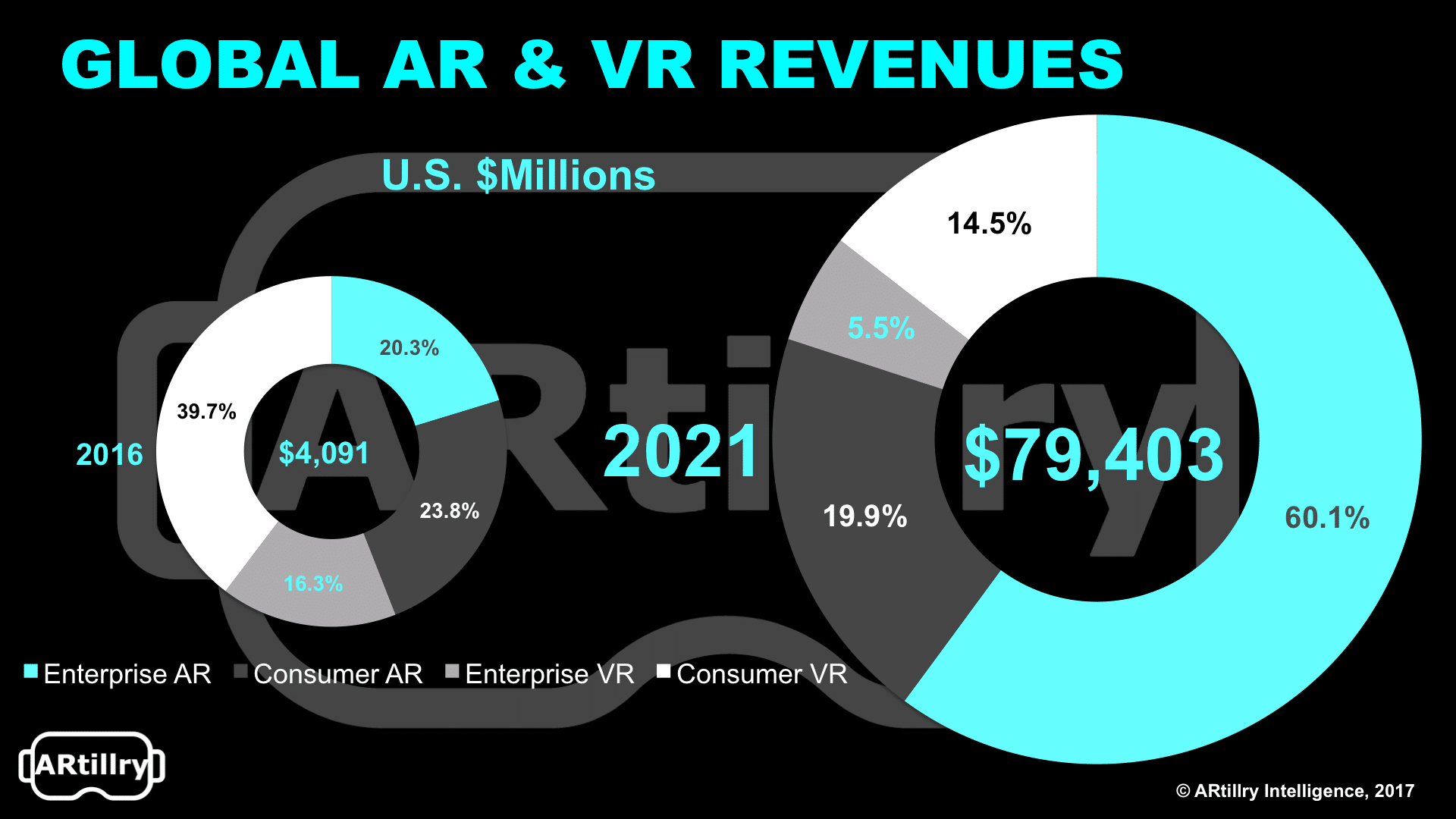
Enterprise XR is starting to show real proof of ROI, as we examined recently. But what are the specific areas where its biggest opportunities lie?
Superdata reports that education is the sector where VR is demanded most, followed by healthcare, architecture, engineering, construction and design. Education and healthcare also have the least supply of VR content, indicating an opportunity to close the gap.

Drilling down to specific job functions, the most desired use for VR in the enterprise is training, followed by product design & engineering then collaborative working. These functions make sense because there are large cost savings (think: travel) in VR’s remote interaction and immersion.

There’s no doubt that the interest is there for Enterprise VR. But interest and integrations are two different things. For the latter to materialize, there needs to be a clear ROI story and sales cycles. Those practices are being optimized as we speak, including data and case studies.
As that comes together, enterprise XR adoption should accelerate in 2018. That will be more so for AR than VR given pass-through vision that’s usable for a greater portion of the working day, as we outlined recently. 2018 will be a big year for the continued validation of that ROI case.

For a deeper dive on AR & VR insights, see ARtillry’s new intelligence subscription, and sign up for the free ARtillry Weekly newsletter.
Disclosure: ARtillry has no financial stake in the companies mentioned in this post, nor received payment for its production. Disclosure and ethics policy can be seen here.
